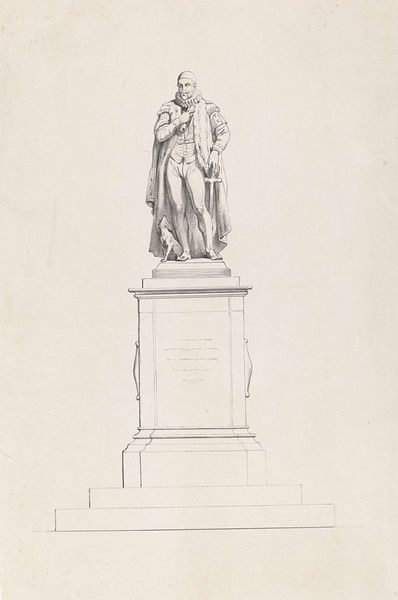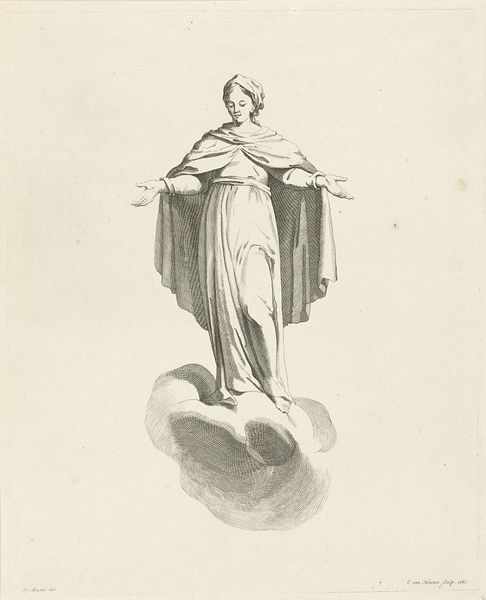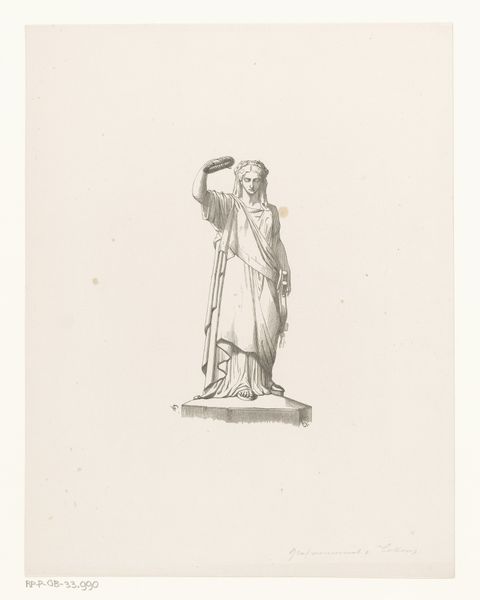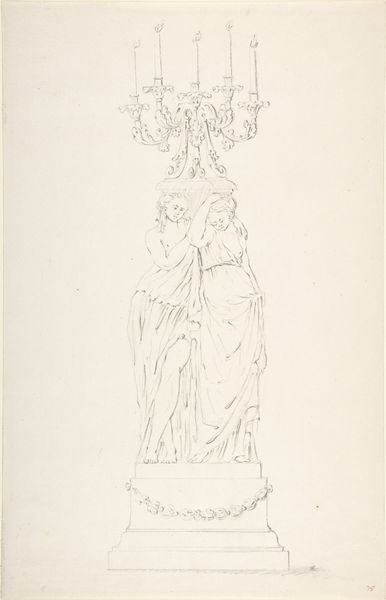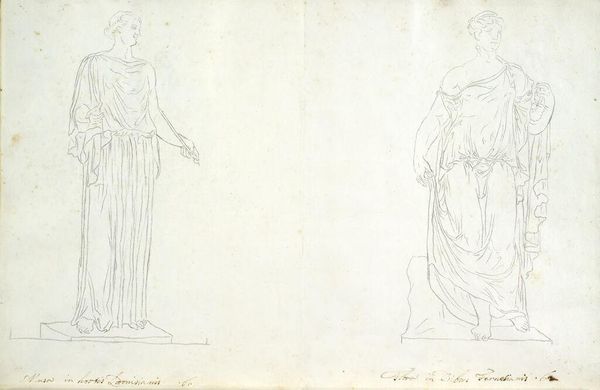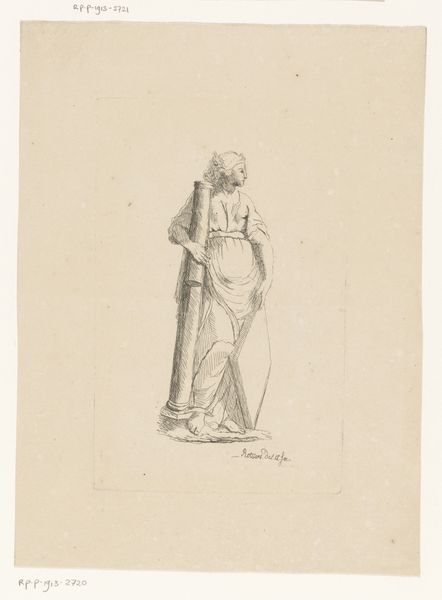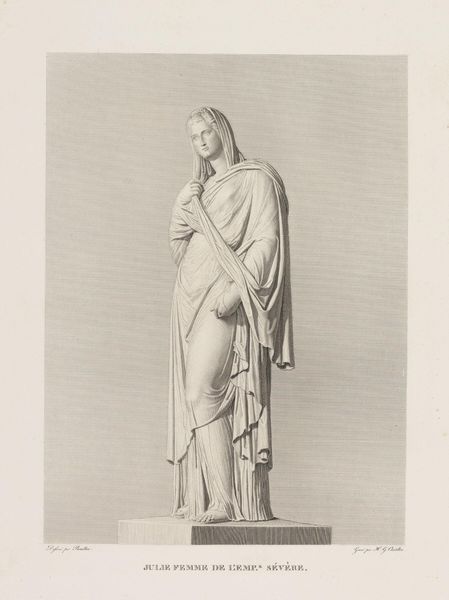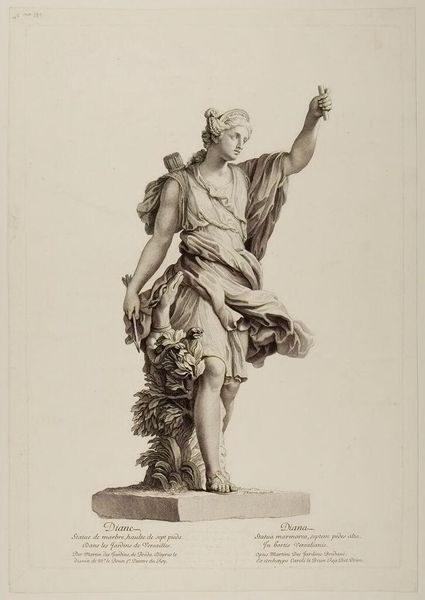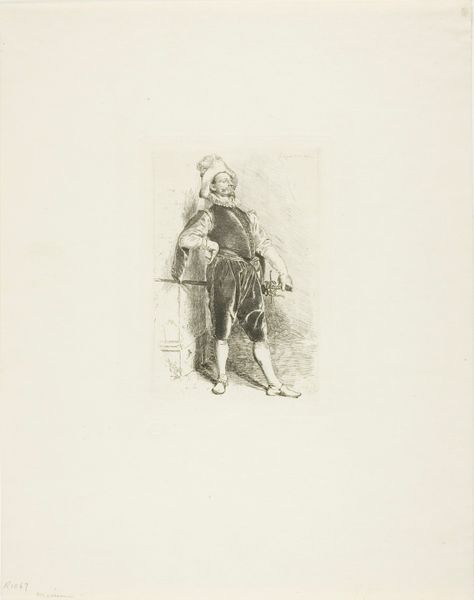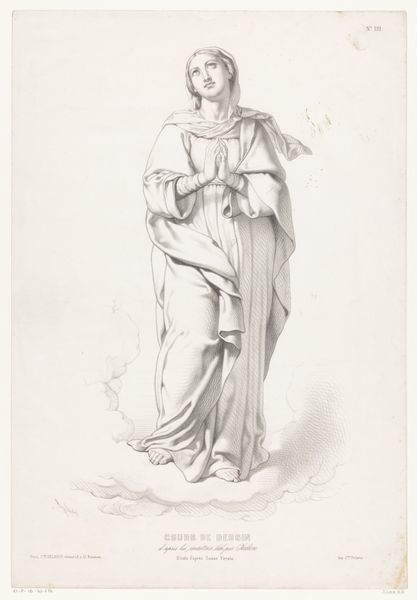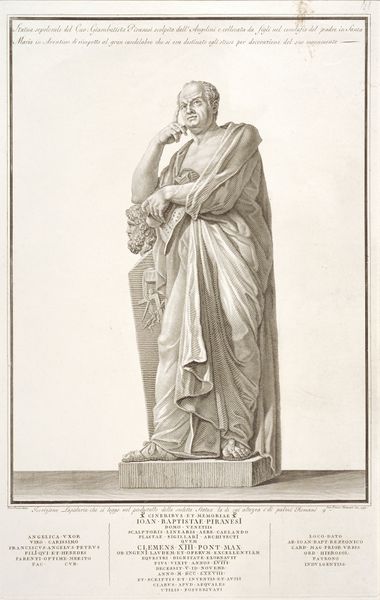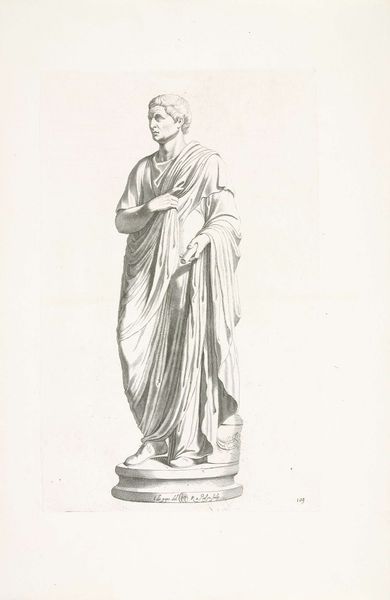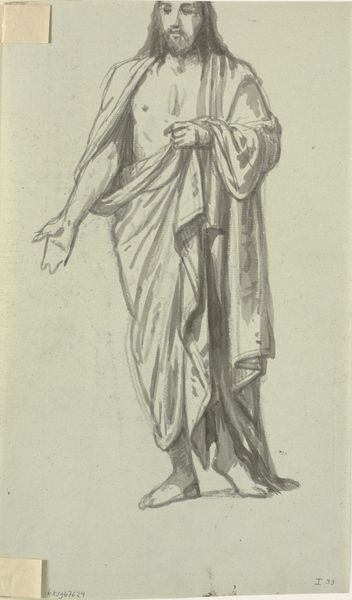
drawing, pencil
#
portrait
#
drawing
#
classical-realism
#
pencil
#
academic-art
Dimensions: height 331 mm, width 235 mm
Copyright: Rijks Museum: Open Domain
Editor: So this drawing is titled "Sculptuur van Molière" by Jacopo Bernardi, made sometime between 1818 and 1848. It looks like a pencil drawing of a sculpture… it's pretty academic, really focusing on realism and detail. What social narratives do you think it opens up? Curator: Considering this is a drawing of a sculpture of Molière, a playwright known for his satirical comedies that critiqued 17th-century French society, it begs the question: why reproduce this image? What function does this reproduction serve, and who is it intended for? It’s interesting that Bernardi chose pencil, a readily available and relatively inexpensive medium, which democratizes access to the image of this cultural figure. Editor: That's a great point. The pencil drawing does give it a different feel than a grand sculpture might. What do you think the choice of portraying Molière, specifically, says about Bernardi's intentions? Curator: Molière represents a challenge to societal norms. Bernardi might be aligning himself with Molière’s critical perspective or suggesting that the values Molière espoused in his plays – the importance of reason, the rejection of hypocrisy – are still relevant in the 19th century. Remember, this was a time of significant political and social upheaval across Europe. How does the medium of drawing perhaps temper that kind of challenge? Editor: Perhaps because drawing is less permanent or forceful than sculpture, it softens the critique and opens it up to more viewers, especially at a time when social critique could be dangerous. The drawing creates a space for considering the role of theatre, satire, and cultural figures in society, maybe even encouraging dialogue in academic settings or amongst the rising bourgeoisie? Curator: Exactly! The act of reproducing a likeness serves to extend Molière’s legacy, inviting further conversations about his contributions. It's fascinating how a simple drawing can spark these considerations about history, accessibility, and the enduring power of art and theatre. Editor: I’ve definitely learned to consider this drawing within a much broader historical and cultural context. Thank you.
Comments
No comments
Be the first to comment and join the conversation on the ultimate creative platform.
